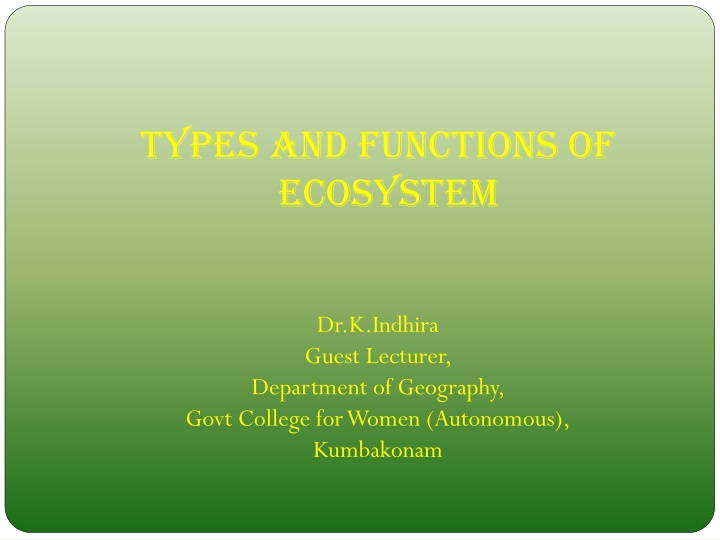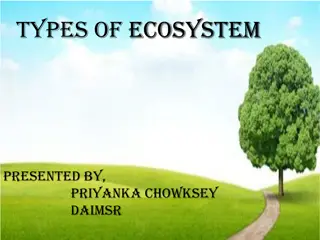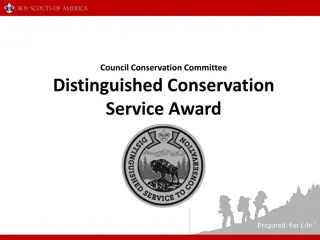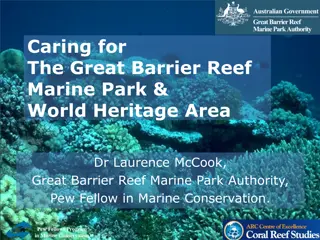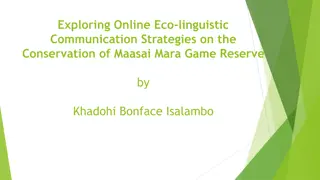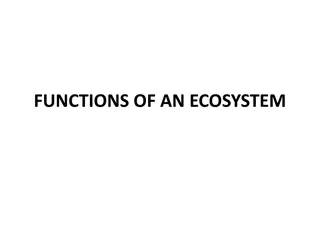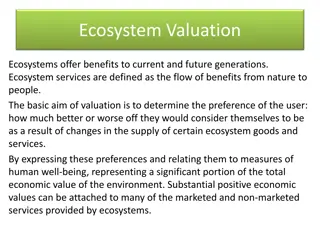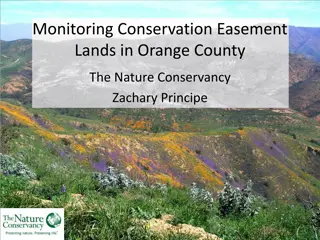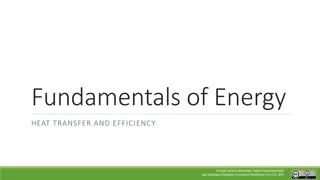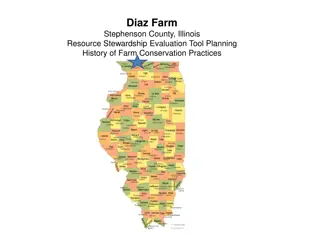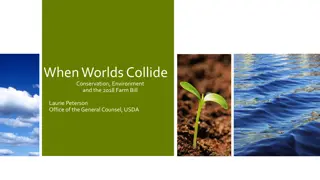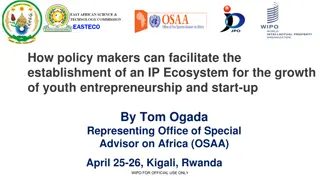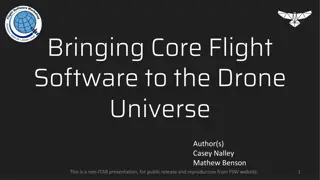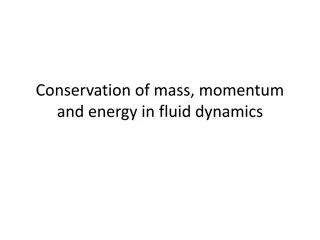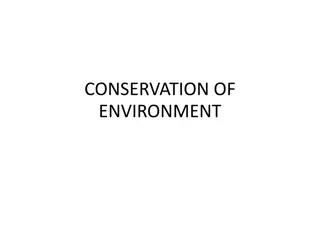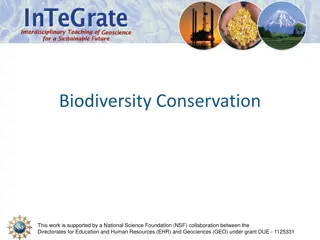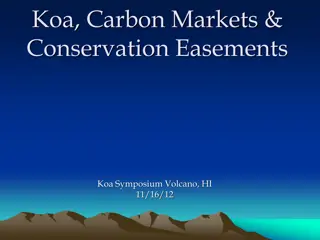Types and Functions of Ecosystem: Components and Conservation
Ecosystems comprise living and non-living elements functioning together, with diverse types such as terrestrial and aquatic. Components include abiotic and biotic factors, each playing crucial roles. Functions involve energy transfer among producers, consumers, and decomposers, highlighting the ecosystem's self-sustaining nature and the vital role of conservation for forest ecosystems.
Download Presentation

Please find below an Image/Link to download the presentation.
The content on the website is provided AS IS for your information and personal use only. It may not be sold, licensed, or shared on other websites without obtaining consent from the author.If you encounter any issues during the download, it is possible that the publisher has removed the file from their server.
You are allowed to download the files provided on this website for personal or commercial use, subject to the condition that they are used lawfully. All files are the property of their respective owners.
The content on the website is provided AS IS for your information and personal use only. It may not be sold, licensed, or shared on other websites without obtaining consent from the author.
E N D
Presentation Transcript
Types and Functions of Ecosystem Dr.K.Indhira Guest Lecturer, Department of Geography, Govt College for Women (Autonomous), Kumbakonam
Content What Is An Ecosystem Types Component Functions of an ecosystem Conservation of forest
ECOSYSTEM The self-sustaining structural and functional interaction between living and non-living components.
What Is An Ecosystem An ecosystem is a natural unit consisting of all plants, animals and micro-organisms (biotic factors) in an area functioning together with all of the non-living physical (abiotic) factors of the environment.
Types Natural 1.Terrestrial ecosystems (grasslands, forests, desert ecosystems) 2.Aquatic ecosystem a.Lentic (Stagnant water) like lake, ponds etc. b.Lotic (Flowing water) like river, ocean, sea, etc. Artificial 1.A crop land, garden, aquarium, park, kitchen garden.
Components An ecosystem consists of two main components Abiotic or Non-living components. 1. Inorganic substances 2. Organic compounds 3. Climatic factors Biotic or Living components. 1. Autotrophs or Producers 2. Heterotrophs or Consumers 3. Decomposers or Saprotrophs
FUNCTIONS OF AN ECOSYSTEM 1. The Producers, the green plants, fix radiant energy(solar energy) and with the help of minerals take from their edaphic(soil where they grow) or aerial environment and build up complex organic matter. These are their food. So, with the help of solar energy they convert the chemical energy of the food to kinetic energy and finally heat energy. 2. The animals eat up plants and other animals as food. So, the energy is transferred through food to animals. 3. When plants and animals die, then decomposers(like certain bacteria and fungi) act on their dead bodies and decompose them into simple materials like carbon dioxide, water and minerals which go back to air, water bodies and soil from where they were taken.
PROCESS OF FUNCTIONING OF THE ECOSYSTEM The carbon dioxide from air, water and minerals from water bodies and soil are again taken up by green plants along with solar energy to make their food. This process is repeated again and again. This leads to continuous functioning of the ecosystem.
ENERGY FLOW THROUGH THE ECOSYSTEM The transfer of energy and matter takes place in the process of predator and prey relationship in a food chain. The original source of energy is the energy from the sun. Out of the enormous amount of energy continuously radiated by the sun, most of it is reflected or refracted back (by atmosphere, earth surface and object like plants). Only a very small fraction, about one per cent, of the solar energy received by the plant is used through the process of photosynthesis.
Conservation of forest Diversion of forest lands for other purposes have to be prevented. Reckless cutting of forests need to be checked. Steps have to be taken to stop shifting practice of cultivation. Forest fire is another cause of forest depletion which needs to be controlled effectively. Afforestation has to be taken up effectively.
Conservation Forests are important components of our environment. Rapid destruction of this important resource is a cause of concern. Afforestation, preventing reckless cutting of trees and making everyone aware of the need to conserve it will help forest conservation. Nature enjoys ecological balance only if the relative number of species is not disturbed. So, conservation of wildlife is important for the future. National parks, wildlife sanctuaries and biosphere reserves are established to protect and conserve wildlife. Such measures would ensure that the wildlife does not become extinct. Conservation of aquatic life would be ensured by removal of industries near water bodies.
Creating Awareness Awareness about ecosystem conservation can be done by posters, competitions about ecosystem conservation, arranging T.V. programmes and websites related to ecosystems.
